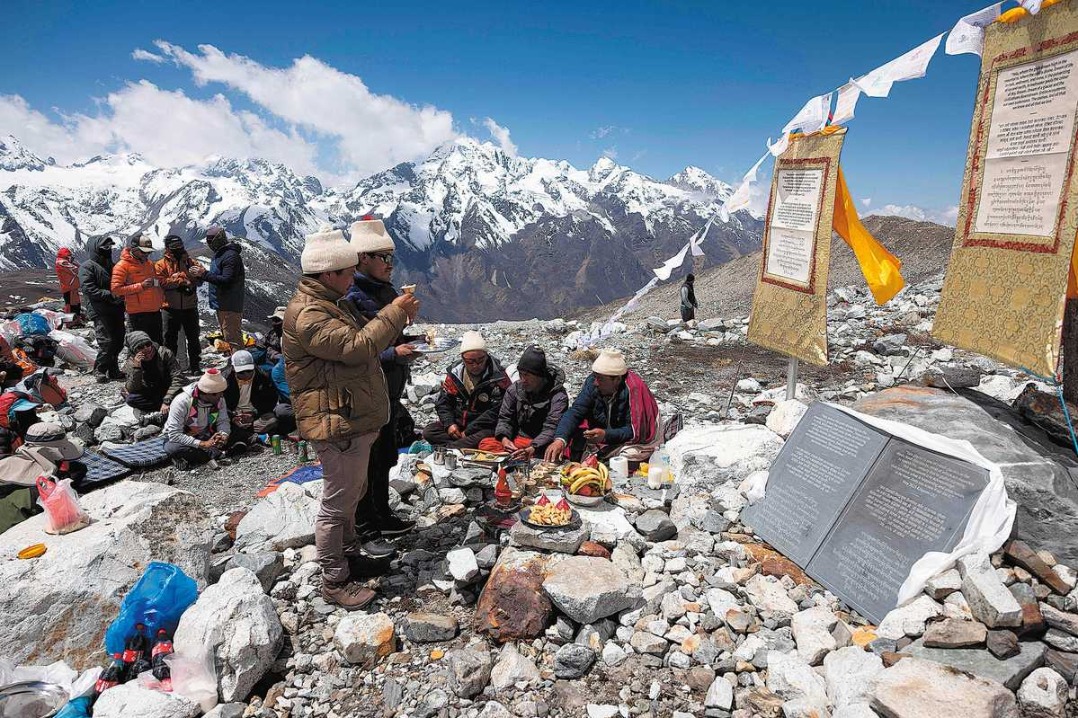Join the club


In the absence of a global carbon trading mechanism, countries should strike bilateral deals and form coalitions to trade carbon credits across borders
After many years of pilots, China's much awaited emissions trading system was launched in early July. This will be the largest carbon market in the world, covering initially over 2,000 companies in the power generation sector that emit over 4 billion metric tons of carbon dioxide a year.
Globally, only 21 percent of emissions are covered by carbon pricing systems. This needs to increase significantly if we want to reach our 1.5 C temperature goal. The new Chinese emissions trading system increases the emissions covered by carbon prices globally by 6 percent more than last year, demonstrating China's tremendous potential in tackling the global climate crisis.
Carbon markets are a critical tool to reduce carbon emissions by making emissions reductions available at the most efficient price. But for the carbon pricing system to be effective in incentivizing greener production, prices will need to be significantly higher. The Organization for Economic Cooperation and Development estimates effective carbon prices to be at around 60 euros ($71) per ton. The global social costs incurred by carbon is even higher, at $100 per ton, according to research by Nicholas Stern and Joseph Stiglitz, two of the foremost economists of our time. If the international community does not step up to combat climate change, it is likely to do $1.7 trillion a year in damage by 2025, increasing to about $30 trillion a year by 2075, according to a report by the Institute for Policy Integrity.
Today, the majority of emissions remain unpriced, meaning that there is no regulatory pressure on companies to buy carbon credits to balance their carbon footprints or to reduce them. New, large-scale carbon pricing schemes such as the one in China will accelerate global carbon pricing coverage, thereby driving up prices.
In the climate space, all eyes are on China's new commitment to be carbon neutral before 2060. This ambitious goal will now need to be followed up with swift policy action and implementation. China is quickly developing from being one of the world's biggest emitters to being one of the world's most influential climate leaders.
The current Chinese emissions trading system covers only energy and a handful of industrial sectors-but it does not put a price on emissions from land use sectors, such as agriculture and forestry. Land use accounts for up to 25 percent of global emissions, and China is a leading producer and consumer of agricultural and fishery commodities.
To tackle the global climate crisis and stay within safe temperature limits, it is crucial to address emissions from the land use sector. This would require a holistic transformation of the land use sectors-much like what we have seen in the energy transition in past decades-including halting deforestation, putting an end to land-use change and radically reducing emissions from agricultural production.
Globally, tropical deforestation causes about 5 billion tons of carbon emissions-more than the entire European Union and five times more than aviation. This can be traced back to the production of a few critical goods. Creating a true land use transition is not only about how we produce food such as beef and soy, but also fibers, wood, textiles and building materials. The world needs to move toward productive and regenerative agriculture and forestry production. This would not only reduce emissions but also bring about many benefits for biodiversity, water quality and soil health, as well as the long-term productivity of farms and therefore food security.
Including land use emissions into the Chinese (or global) carbon pricing scheme would send a signal to agricultural producers to move to more sustainable models and invest in natural climate solutions. Over the last decade, China's political leadership has emphasized the need to protect the country's natural capital and tightened domestic environmental standards under the concept of realizing an ecological civilization. The country has introduced an agricultural redline to put a minimum floor on the amount of agricultural land. The Ecological Conservation Redline commits over one-fourth of China's territory to varying degrees of protection for biodiversity, disaster mitigation and providing critical ecosystem services. China's unique experience in integrated national spatial land-use planning for food, climate and ecological security holds important lessons for other countries.
China has begun to transform into a climate leader on the international stage. The Chinese government is hosting the biodiversity conference COP 15 in Kunming in October where finance for biodiversity will be one of the key topics, offering an opportunity for China to continue establishing itself as a champion in the environmental space. Carbon markets have the potential to unlock large scales of finance flowing into carbon and biodiversity at the same time.
Carbon markets will also be a key topic at the international climate conference COP 26 taking place in Glasgow, Scotland, later this year. Article 6 of the Paris Agreement to be operationalized covers the international transfer of mitigation outcomes. This article regulates the international carbon market, following on from the clean development mechanism under the Kyoto protocol. As the Kyoto protocol has come to the end of its term, a new international agreement is urgently needed. Countries failed to reach a consensus at the last climate conference in Madrid and intersessional negotiations in June this year did not prove fruitful.
The answer might lie in coalitions of governments willing to trade carbon credits across borders to meet their national climate targets in the case of industrialized nations, or to finance the conservation of their natural heritage in the case of forest countries, or in bilateral deals: earlier this year Peru struck the first international transfer agreement with Switzerland, many may follow this example.
If China were to support the idea of such international carbon market clubs, it could prove a powerful tool to get us one step closer to solving the global climate crisis.
Teresa Hartmann is the lead of Climate and Nature at the World Economic Forum. Zhu Chunquan is the head of China Nature Initiatives at the World Economic Forum. The authors contributed this article to China Watch, a think tank powered by China Daily. The views do not necessarily reflect those of China Daily.
































